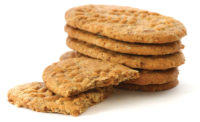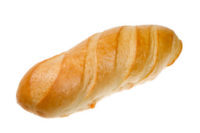
For the past couple years, all we’ve been hearing about in the food industry is more whole grains, more fiber, less fat, and making sure it has zero high-fructose corn syrup (HFCS). In fact, several bakers and snack manufacturers have gone to great lengths to reformulate their recipes so that this “dangerous” ingredient doesn’t sneak into their products.
As a result, the Corn Refiners Association (CRA), Washington, D.C., took action to set the record straight by launching a national media campaign touting HFCS as simply just sugar. Yet several new product developments continue to come through the pipelines promoting their elimination of HFCS.
While some consumers may think HFCS is the end-all be-all to maintaining a healthy diet, a recent Mintel study confirms that most consumers really aren’t avoiding the ingredient, and in fact, don’t even consider it to be a so-called threat.
The study, conducted by the Mintel Research Consultancy in April, consisting of 30 questions, half aided, half un-aided, surveyed a sample of 2,005 primary household grocery shoppers on their eating and purchasing behaviors. According to the results, only 3% of the shoppers polled indicated that they were looking for HFCS on the ingredients label. In the same question, 25% are looking at the sugar/added sugar content, 26% are reviewing salt/sodium, 37% seek the calorie count and 38% read the labels for fats and oils.
In addition, the study showed that 17% of consumers were trying to avoid “sugar or added sugar,” as opposed to only 4% who indicated they were looking to avoid just HFCS. Meanwhile, 17% seek to avoid sugar/added sugar, 20% looked to avoid fats and oils and 37% aimed to avoid calories.
If consumers aren’t really concerned about HFCS, then what’s all the fuss about?
“Most of the research that has been done on HFCS has simply been done incorrectly,” says David Lockwood, director of research consultancy for Chicago-based Mintel. “People are responding to the news and how dangerous [HFCS] is and how people are avoiding it, and that’s simply not true. This study shows that there’s a difference between what consumers say they do and then actually do.”
Those 17% aiming to avoid sugar/added sugar may not necessarily be looking to avoid HFCS, per se.
“Many consumers know that HFCS is an added sugar in the diet, and it’s safe to assume that the 4% [of those who are avoiding HFCS] are trying to reduce sugar overall,” says Audrae Erickson, president of CRA, who commissioned the study with Mintel.
This being said, CRA urges bakers and snack manufacturers to continue incorporating HFCS into their recipes and portfolios.
“High-fructose corn syrup not only provides a cost advantage from a formulation perspective, but also offers other attributes such as functionality,” Erickson says. “[HFCS] retains moisture, enhances rather than masks fruit fillings and spices in baked goods, performs moisture control and retards spoilage, among others.”
And, unlike other ingredients that have been scrutinized by the government as being not healthy enough for consumers, HFCS fails to remain on that list.
“The science is very clear now that metabolically and nutritionally, HFCS is the same as sugar,” Lockwood says. “There’s not going to be a big push from science or government like there was with trans-fat, and there’s no reason there should be as it turns out.”
So go on bakers and snack producers, keep those HFCS-laden products coming.


